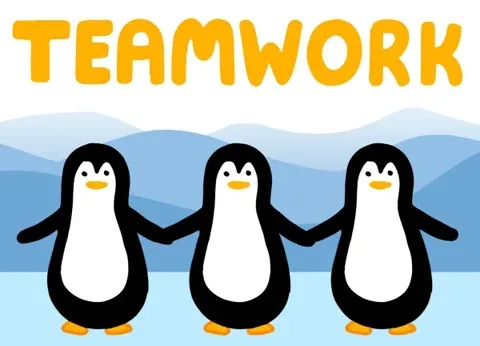
This logo isn't an ad or affiliate link. It's an organization that shares in our mission, and empowered the authors to share their insights in Byte form.
Rumie vets Bytes for compliance with our
Standards.
The organization is responsible for the completeness and reliability of the content.
Learn more
about how Rumie works with partners.
Have you ever thought, “I just want to do my job, rush out the door, and drive home!”

We’ve all been there!
It can be challenging to build relationships with coworkers because of different personalities, temperaments, experiences, and backgrounds.
As an introvert, I've been in the same shoes.
Here are 3 small steps you can take today to build a better relationship with your coworkers!
1. Communicate Effectively
Learning how and what to communicate helps build better relationships with coworkers.

Smile: A smile shows that you're approachable, friendly, and open to communication.

Clear and concise communication: This helps build trust and avoid misunderstandings and conflict.

Active listening: Listen to understand instead of listening to reply.

Non-verbal cues: Communication is more than using words. Non-verbal cues such as nodding, maintaining eye contact, posture, and facial expressions help build deeper connections and understanding.

Dos
Be patient
Give your full attention
Ask open-ended questions
Empathize
Respect differences

Don'ts
Interrupt
Daydream or multi-task
Offer solutions too quickly
Dismiss emotions
Form judgments
Quiz
Mark is listening to his coworker Sarah explain her ideas for a team project. He's not sure he understands her ideas. How can Mark show effective communication? Select all that apply:
Correct! Summarizing her main points and asking for more information shows that he's listening to her ideas and checking to make sure he understands
2. Build Long-term Relationships

Building relationships is an ongoing process. Patience and consistency are key. By investing time and effort into fostering positive relationships with your coworkers, you contribute to a more collaborative and enjoyable work environment.

Appreciation: Offer a simple "thank you" or recognize a coworker's help.
I once bought my coworker a coffee as a "thank you" for going out of her way to help proofread a document.

Teamwork: Working together on projects helps you learn more about coworkers and build a stronger bond.
I learned that my coworker was fluent in 4 languages, which later helped me translate content to a language she spoke.

Share knowledge: Using your skills and knowledge to help coworkers shows respect and care.
I offered to help a teammate simplify a document so he could work on a different project that was due soon.
3. Avoid Negative Talk

Negative talk in the workplace includes gossip, complaining, blaming, or expressing dissatisfaction with colleagues, superiors, or the overall work environment.
It can create a toxic workplace culture, harm relationships, and affect the morale of the team.

Gossip: Gossiping with and about colleagues harms relationships and breaks trust.
I used to think that gossiping about coworkers who gossip about you is okay. But it's not, as it's better to stay away from all and any gossip!

Certain topics: Stay away from religion, politics, personal relationships, and salaries. Neutral topics help respect diversity, prevent conflict, and create a positive work environment.

Talking badly about the company: Bad-mouthing the company, management, or colleagues leads to temporary satisfaction and can bite you in the back.
Growing up. my teacher always said, "Never bad-mouth the people who feed you and your family!"

Offensive humor/language: Humor can be fun for some yet offensive to others. Be mindful.
Quiz
Mike's colleagues are having a heated discussion about a local election. How should Mike respond?
Shifting the conversation to more neutral topics or excusing yourself to avoid the conversation helps avoid negative talk in the workplace.
Take Action

Learning to get along with coworkers is a skill you can practice and get better at!
This Byte has been authored by
Pattiya Shenila Peries
Instructional Designer
BEd